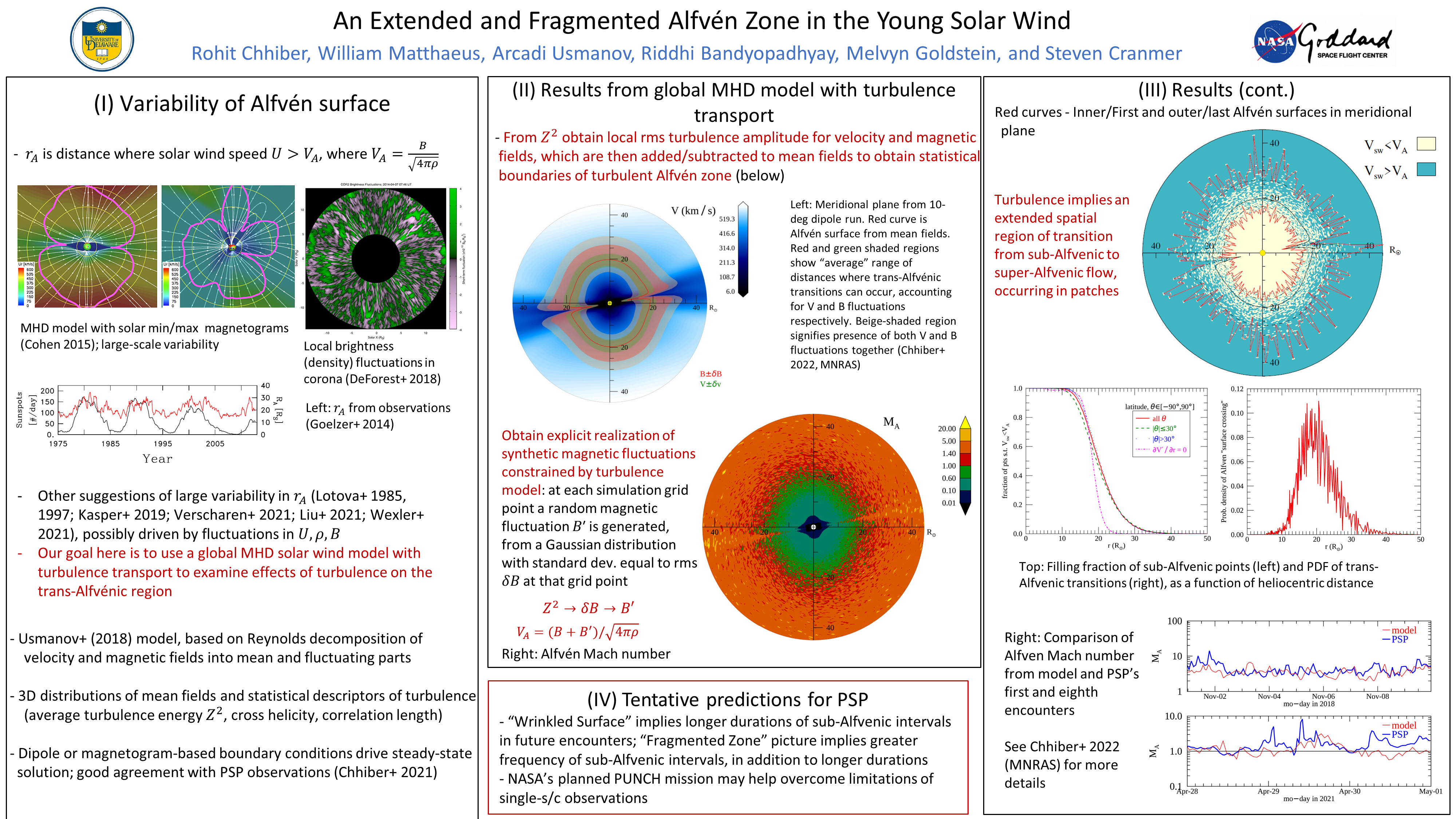Authors: Rohit Chhiber (University of Delaware & NASA GSFC), William Matthaeus (University of Delaware), Arcadi Usmanov (University of Delaware & NASA GSFC), Riddhi Bandyopadhyay (Princeton University), Melyvn Goldstein (University of Maryland Baltimore County)
Motivated by theoretical, numerical, and observational evidence, we explore the possibility that the critical transition between
sub-Alfvénic flow and super-Alfvénic flow in the solar atmosphere takes place in fragmented and disconnected subvolumes
within a general Alfvén critical zone. The initial observations of sub-Alfvénic periods by Parker Solar Probe near 16 R_sun do
not yet provide sufficient evidence to distinguish this possibility from that of a folded surface that separates simply connected
regions. Subsequent orbits may well enable such a distinction, but here we use a global magnetohydrodynamic model of the solar
wind, coupled to a turbulence transport model, to generate possible realizations of such an Alfvén critical zone. Understanding
this transition will inform theories of coronal heating, solar wind origin, solar angular momentum loss, and related physical
processes in stellar winds beyond the Sun.


